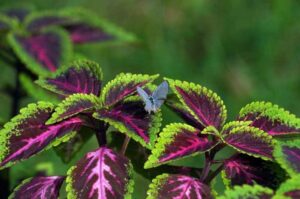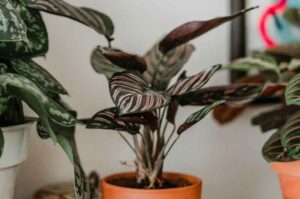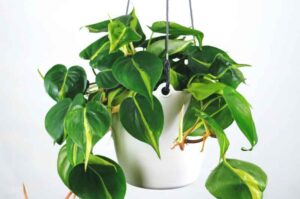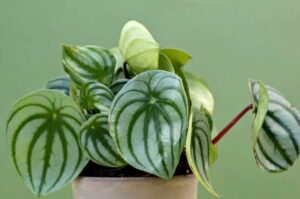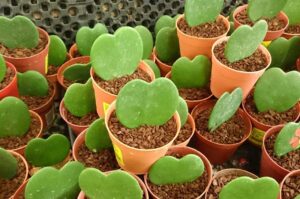Why Is My Caladium Drooping? (6 Different Causes and Their Solutions)
Caladium plants are great for indoor decoration due to their beautiful foliage. These plants are the right choice for shady gardens and yards. Caladiums have multicolored leaves that make them more attractive for indoor decoration or even outdoors. But being a native of topical Brazil these plants are intolerant to temperature fluctuations and some other factors that make them fussy at times, and sometimes these plants show symptoms like drooping. In this article, we are going to address the issue, of the drooping Caladium plant.
Underwatering and overwatering are the two main reasons for the drooping of caladium. The Caladium plant needs regular watering and warmth to thrive. The other factors that might be contributing to the issue are the selection of improper potting soil mix, overexposure to sunlight, temperature stress, and deposition of fertilizer salts due to overfeeding.
But only knowing the brief reasons for such issues will be of no help. And that is why in this article we are going to look at all the different issues in detail and provide solutions along with them so that your Caladium plants stop drooping and start showing their foliage again in full glory.

Let us now discuss in more detail the various reasons for which your Caladium is drooping.
1. Underwatering
Consistent water supply and moist soil are necessary for a caladium plant. If you see the wilting leaves, then consider it as a distress signal that your caladium is underwatered. Caladium leaves turn dormant and eventually droop due to a lack of water.
The reason for this can be bad watering habits or keeping your plant directly under the sun. This will result in the heat from the sun drying out the soil by taking away moisture from it.
Ways to fix a caladium drooping due to underwatering:
- What Caladiums require is moist soil. That means the soil should not be dry nor overwatered.
- Spraying water on the caladium leaves will begin the process of recreating the moisture level naturally.
- Keep the soil moist and add pine straw mulch which works best for acid-loving plants like caladium to retain moisture.
- Water the plants when there is a need. Before watering press the soil around the soil to check the moisture content. If you can push your finger in around 1-2 inch then there is no need to water. If it is not the case, you need to water the plant thoroughly and make sure the excess water runs out of the drainage holes.
- Keep the plant away from direct sunlight to stop fast evaporation that takes away all the moisture.
You may also like- How to water indoor plants while on vacation
2. Overwatering
Although there is a huge emphasis given on watering the caladium regularly, it is important to not over-water the plants. Tubers tend to rot when caladium is overwatered. This is because over-watering clogs the air spaces in the soil and prevents air from reaching the roots.
This consequently affects the ability of the plants to keep their leaves and overall body structure in shape. Thus this can be an issue too with your plants.
Solution
- Separate any dying roots from the healthy ones that are left. Also, try creating space around roots to receive the oxygen supply.
- Replace the pot and get new ones with enough drainage holes, if the current one does not provide proper drainage.
- Try to increase the drainage capacity of the potting soil by adding some perlite or pumice to it.
- You can also change the potting soil if it is not draining properly. We will recommend this one from Amazon.
- As aforementioned do not water the plants until it is required to do so.
You may also like the article- How to make potting soil for indoor plants?
3. Overexposure to sunlight
Another major cause for your Caladium drooping its leaves is overexposure to sunlight. These plants need bright indirect sunlight to grow and consequently maintain their beautiful foliage.
Exposing them to direct sunlight causes the leaves to burn and also the colors to bleach out. The edges of the leaves turn brown or yellow and start drooping.
Steps to prevent overexposure
- To recover a caladium that has been prey to overexposure, increase the frequency of watering. It is very important to hydrate the roots in the period of recovery. Don’t overwater the plant.
- Move the plant to a shady area, and trim the damaged edges.
- Put a curtain or sheet between the direct source of sunlight and the plant. Preferably keep the plant a few inches away from the window sill.
- Increase the humidity around the plant during its recovery period. This helps because Caladiums thrive in high humidity.
Following these simple steps (if your plant is suffering from overexposure that is) will revive the leaves in no time.
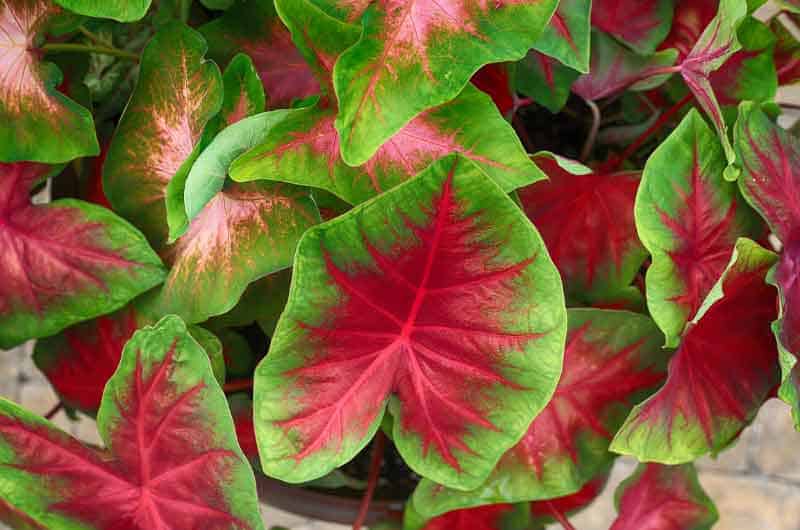
4. Temperature stress
Being a tropical plant as already mentioned. Caladium plants have little to no tolerance for temperature fluctuations. More so when the surrounding temperature is cold.
The ideal temperature for these plants is around 70-85 degrees Fahrenheit and they are showing signs of distress when the temperature falls below 65oF, and drooping leaves are one of them. And if the temperature drops below 45oF these plants will die.
Along with temperature, humidity is another important factor for Caladium leaves. Just like they require high temperatures they also need high humidity. Low humidity is a bane for these plants and can also result in the leaves drooping.
How to prevent a caladium from temperature stress
Retaining heat is the key here. Keep the plants in an area that does not have direct sunlight but has a temperature in the healthy range of the plants. Covering the plants with plastic from time to time is also a good idea as this will also trap the humidity and play a greenhouse effect by trapping the heat.
To maintain proper humidity around the plants, the best method to go for is using a humidifier. Grouping the plants also help as they keep the surrounding humidity up by transpiration.
Another ingenious method is to use humidity trays. These can be made by anyone. Learn how to make one here
5. Improper potting soil mix
Caladium thrives in well-drained, fertile, and acidic soil. Improving the fertility and texture of the soil by adding compost is a bonus for caladium.
However, sometimes due to poor agriculture practices, the soil we choose to plant does not have these qualities or ends up losing them. And when the poor soil runs out of moisture, the plant suffers dehydration and the leaves start drooping.
Making a perfect potting soil for Caladium
- Nourishing the soil with lots of nutrients such as compost and manure is required when it comes to healing the damaged soil. Applying manure and compost in layers can work wonders if done properly.
- Covering the soil with pine straw mulch is important as this holds the moisture in the soil that is much needed for the Caladiums to grow properly and retain their beautiful foliage. This will also help in preventing the soil from washing off.
- Caladiums require acidic soil. Therefore testing the pH level of the soil to make sure it is on the acidic end ( around 5.5), is necessary. If not you can always add acidic mulch to turn the soil acidic.
Proper potting soil mix is important for any household plant to grow, more so in the case of such fussy plants like the Caladium. So make sure you are getting your potting soil mix right so that you can provide proper nourishment to the plants to encourage their foliage growth.
6. Overfeeding
Fertilizers are an important aspect of the overall growth of Caladium plants. This naturally means they also are a reason for the health of the leaves. But too much of them is not good.
Fertilizers should be used on these plants in proper proportions. You will easily understand if you have exceeded the limit because the extra salts will appear on the surface of the soil.
This prevents the uptake of water by the soil and subsequently causes the drooping of leaves, as the leaves curl and droop to retain water by preventing transpiration (an activity of plants by which they release water into the atmosphere).
Fertilizers are ideally used on these plants during the growing seasons by using the liquid variant or slow-releasing pellets.
But don’t worry if you have made the mistake of overfeeding as there are several ways by which you can rectify the mistake.
- Deep and long waterings will help in washing off the built-up salts. Make sure your pots have drainage holes so that the water can drain through them.
- Leach potted plant every six months to prevent the salt buildup.
- Remove the damaged foliage as it hampers the healing process. Once the plant recovers, it will produce new foliage.
- The plants that have severely salt layers in the surrounding soil need to be repotted.
Final thoughts
Almost any indoor plant will thrive just by focusing on the basics such as pot, soil, water, and sunlight needs. Some plants are simple and easy to be taken care of, while some are a bit complex to maintain.
However, with proper knowledge ( which we hope you have by now! ) it is relatively easier to determine the cause and resort to the right methods to solve the problem.
So, follow these simple steps and watch your Caladiums unfurl their leaves right in front of your eyes.

